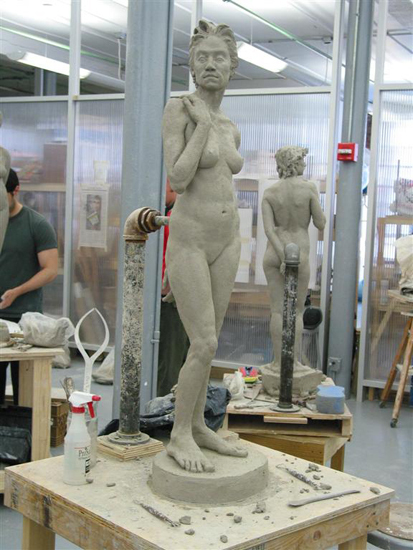"I am a junior art major, and I cannot really tell what I would like to focus on if I go on to graduate school. It makes it even harder for me to choose schools because I don't know what field of art I want to pursue. I just love everything about art to be honest. For such people like me, feeling lost in what we've been doing, yet longing for higher education in graduate school, what advice do you have?"
For many art students, choosing their major in order to apply to a specific graduate school is a tremendous source of stress. Being required to select a major when applying to graduate school can feel like being asked to make a permanent declaration of your artistic identity. In reality, your field of study in graduate school does not have to set your artistic future in stone.
While a school may ask you to choose a specific field, the truth is that many professional artists work fluidly in a number of fields. Many of my favorite artists are the ones whose works defy categorization, and who are extraordinarily prolific in a number of contrasting art media. Take someone like the contemporary South African artist William Kentridge, who has worked in everything from drawing, animation, sculpture, and printmaking, to stage design. Picasso began his career as a painter, but experimented tremendously with found objects, drawing, and printmaking. The 18th century Italian printmaker Piranesi began as an architect who later created etchings which depicted imagined architectural spaces. These artists may have started out studying one specific field, but eventually their work in multiple fields blended together into one cohesive vision.
When it came time for me to go to graduate school, I intentionally chose sculpture, a field that I had very little experience with at the time. My primary interest and background was actually in painting, but I was curious to see how studying a different field could influence my paintings. Not only did I end up discovering a new passion for sculpture, but I found myself in the printshop for days on end. Eventually, I dropped painting altogether and emerged as a sculptor and printmaker who specialized in drawing. In this way, I created an interdisciplinary approach for myself that embraced a broad range of fields. My major might have been initially declared as sculpture, but that did not prevent me from branching out into other media.
You can approach this process as an opportunity to study an area you've always been curious about, but haven't done much work in. Or, choose an area that you already have a strong interest in and would like to develop a deeper understanding of. Think about the major you select for graduate school as a departure point. From there, you'll be able to spread out into other media as your interest and ideas dictate.
Ask the Art Professor is a weekly advice column for visual artists. Submit your questions to clara(at)claralieu.com

